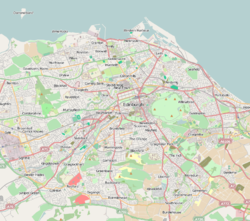History
The building was designed by Duncan Menzies as the headquarters of the Queen's Edinburgh Rifles and completed in 1872. [1] Following extensive refurbishment work the building was re-opened by the Duke of Connaught in May 1905. [2]
The Queen's Edinburgh Rifle Volunteer Brigade became the 4th and 5th (Queen's Edinburgh Rifles) Battalions, the Royal Scots in 1908. [1] The battalions were mobilised at the drill hall in August 1914 before being deployed to Gallipoli and then to the Western Front. [3] The 4th and 5th battalions amalgamated to form the 4th/5th (Queen's Edinburgh Rifles) Battalion, with its headquarters at the Forrest Hill drill hall in 1922. [4] In 1939 the battalion converted to manning searchlights and, in 1940, became an anti-aircraft regiment of the Royal Artillery. [4]
The drill hall was the home of the Edinburgh University Officers' Training Corps and its successors, the Edinburgh and Heriot-Watt Universities OTC and the City of Edinburgh Universities OTC, from 1957 until the Universities OTC moved to Duke of Edinburgh House in Colinton Road, Edinburgh in 1993. [5] The building was decommissioned and taken over by the University of Edinburgh in the mid-1990s. The building then became the location of the Department of Artificial Intelligence. [1]
This page is based on this
Wikipedia article Text is available under the
CC BY-SA 4.0 license; additional terms may apply.
Images, videos and audio are available under their respective licenses.


